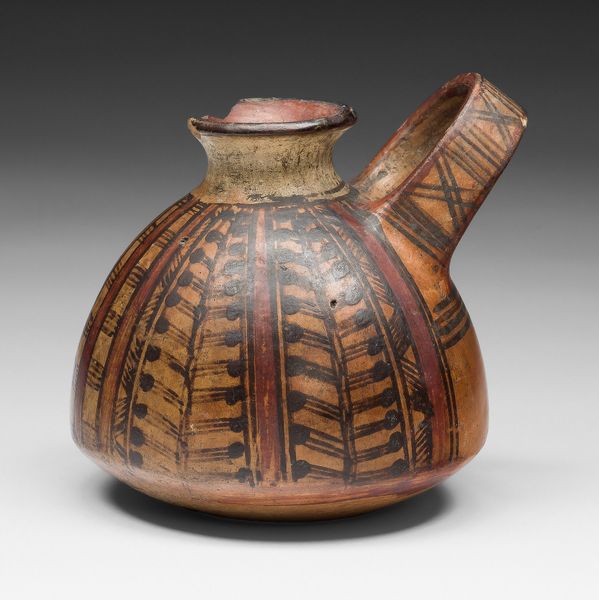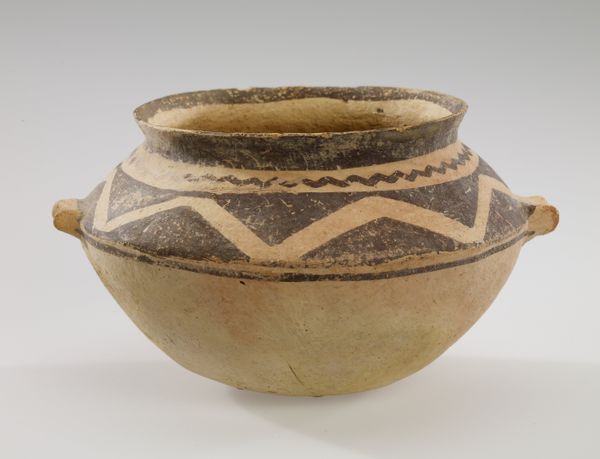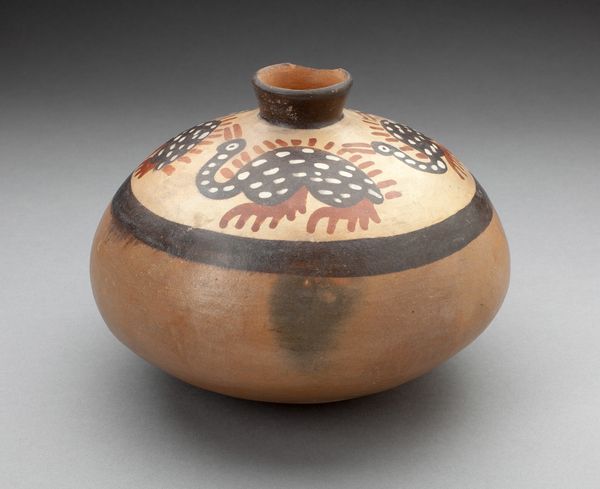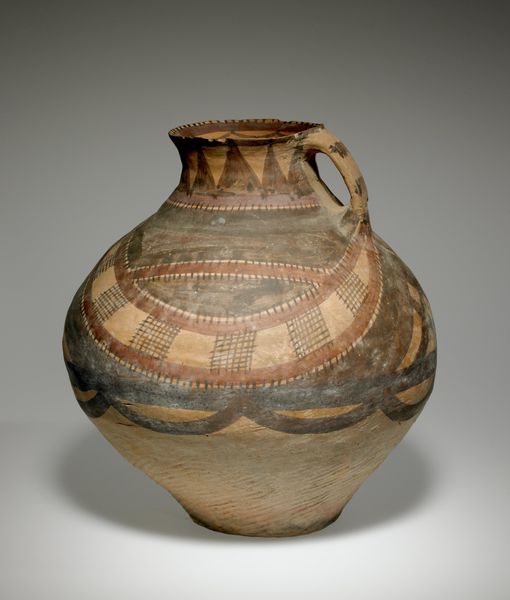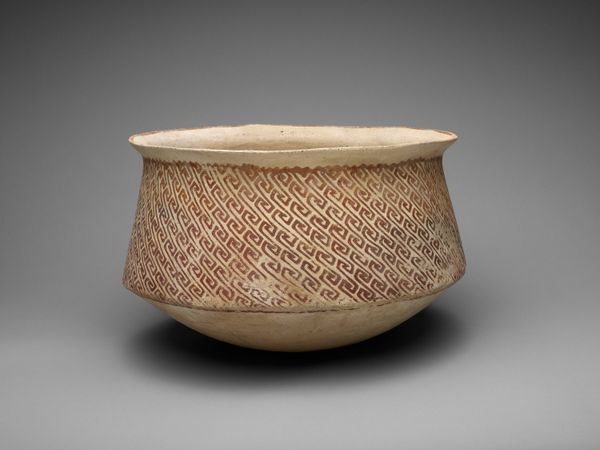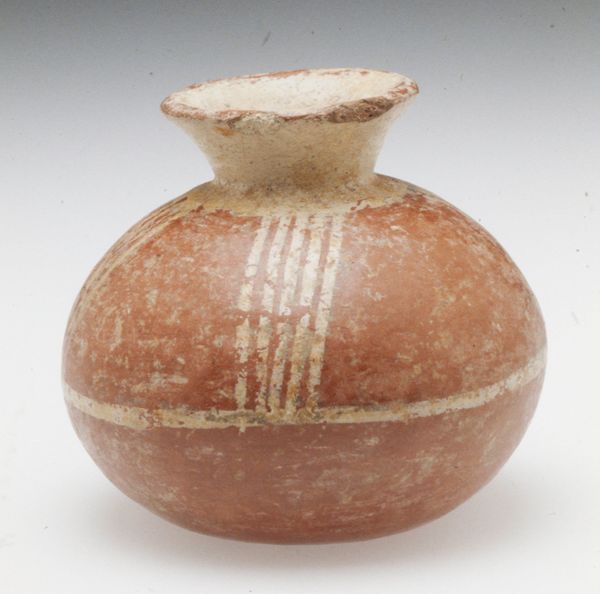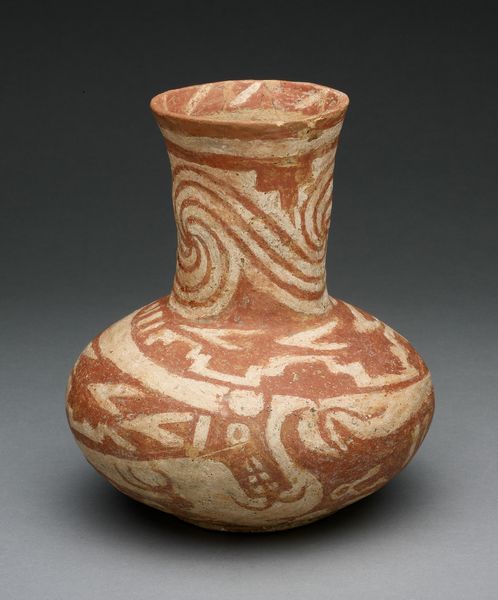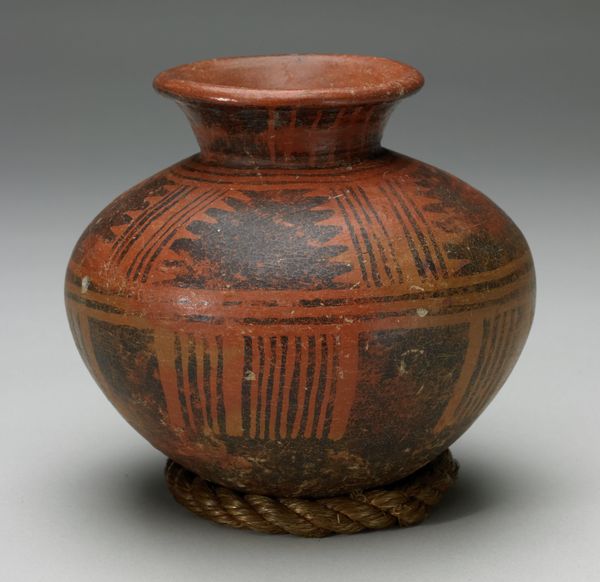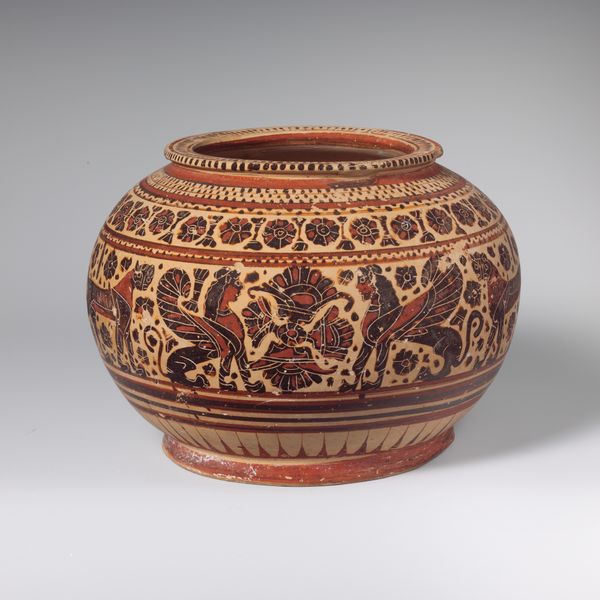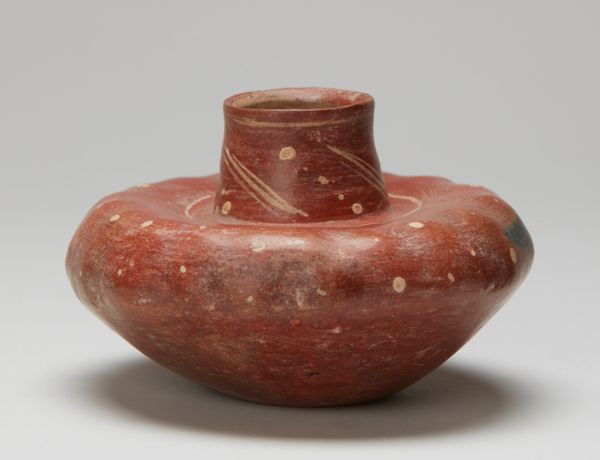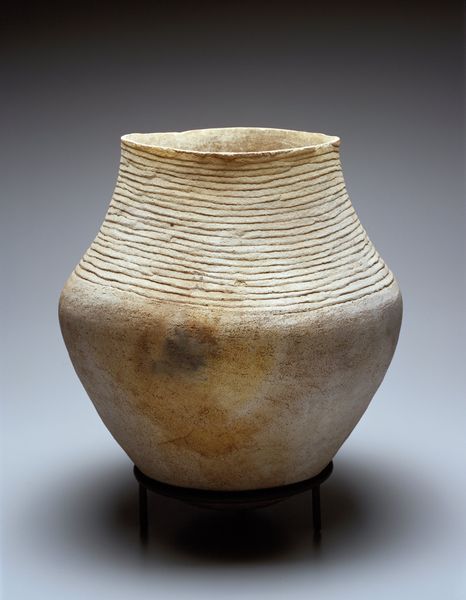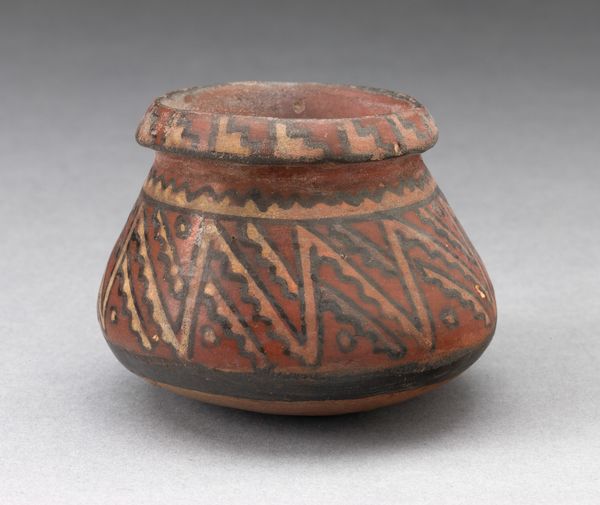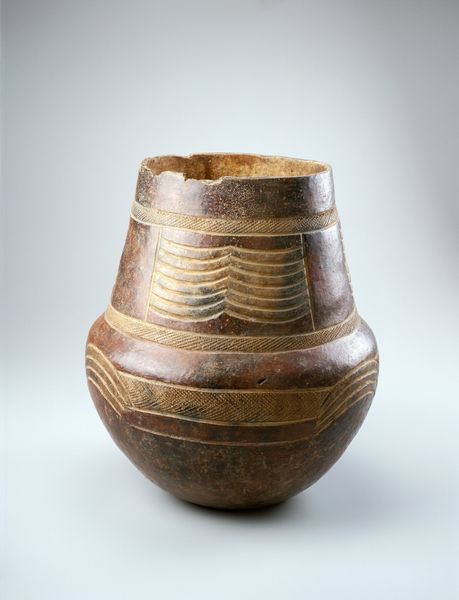
ceramic, earthenware
#
ceramic
#
earthenware
#
geometric
#
ceramic
#
indigenous-americas
Dimensions: 24.8 × 38.1 cm (9 3/4 × 15 in.)
Copyright: Public Domain
Curator: This object is a Hohokam jar, likely created between 950 and 1150 AD. It's made of earthenware ceramic and displays abstract geometric designs. Editor: The first thing I notice is how grounded and substantial it feels, despite the delicate patterning. There's something inherently earthy about the form and coloring. Curator: Absolutely. The Hohokam people, who inhabited the area that is now Arizona, were deeply connected to the land, and their pottery reflects that. Jars like these weren't just utilitarian; they were crucial cultural artifacts, used for storing water, seeds, and other necessities. We see, often in ceramics from Indigenous communities of the Americas, how function elevates into artistry. Editor: I'm fascinated by the duality in the decoration. One side is a field of solid, warm brown, contrasting against the light ground, while the other is covered with parallel lines. What might these motifs signify? Do you think the change from one area of surface treatment to another had some cultural significance or was a common surface treatment? Curator: Interpreting specific symbols across such a time gap is tricky, and perhaps, impossible. However, it’s fair to look into existing community oral stories that will provide better, contemporary insights into its symbolism or reflect a broader cultural narrative for this type of surface treatment. Indigenous art wasn’t – and isn’t – created in a vacuum. This earthenware, like so many objects of the time, reflect an organized society’s views. The geometry alone, suggests deliberate social encoding or an indicator of place and belonging. Editor: It definitely speaks to an intentional process, reflecting the larger community through artistry, utility, and culture. It does invite so many fascinating thoughts on place, space and meaning for a civilization no longer present. It reminds us of our profound connectedness with all of history's peoples. Curator: A worthwhile point about recognizing that connection, as an important visual reminder, with a need to further understand Indigenous cultures through objects and how its significance endures.
Comments
No comments
Be the first to comment and join the conversation on the ultimate creative platform.
